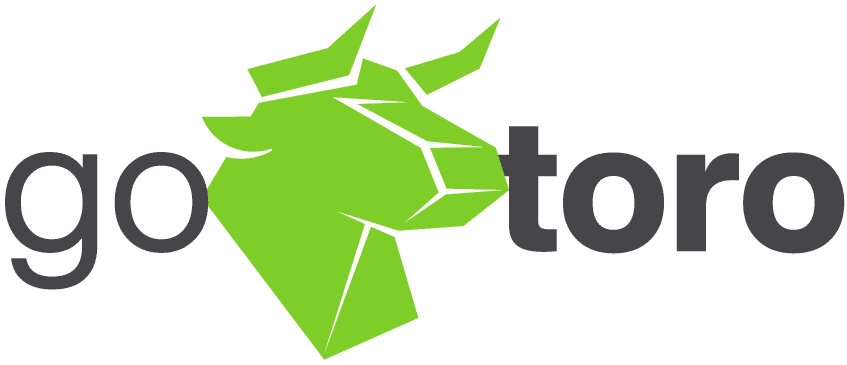Brief Overview of the Current HR Landscape
The landscape of Human Resources (HR) in 2024 is more complex and demanding than ever before. With rapid technological advancements, shifting workforce demographics, and evolving employee expectations, HR professionals are navigating a challenging terrain. One of the most pressing issues they face today is talent acquisition. As companies strive to find the right talent to drive their growth and innovation, they encounter numerous obstacles that make talent acquisition a significant challenge.

State of HR Report 2024 by BambooHR
The State of HR Report 2024 by BambooHR provides a comprehensive overview of the current challenges faced by HR professionals. According to this report, talent acquisition stands out as the most frequently mentioned challenge. HR professionals across various industries highlight the difficulties in sourcing, attracting, and retaining qualified candidates. The report underscores that managing talent acquisition effectively is critical to organizational success but remains the most difficult issue for HR teams to tackle.
The Current State of Talent Acquisition
Talent Acquisition as the Most Frequently Mentioned Challenge
The State of HR Report 2024 reveals that talent acquisition is the top challenge cited by HR professionals. This finding is not surprising given the competitive job market and the increasing demands from both employers and job seekers. The ability to acquire top talent is pivotal for companies aiming to maintain a competitive edge. However, the report indicates that nearly half (48%) of HR professionals struggle with talent acquisition challenges due to a shortage of qualified candidates.
48% of Survey Participants Face Challenges Due to a Shortage of Qualified Talent
A significant 48% of survey participants in the BambooHR report attribute their talent acquisition challenges to a shortage of qualified talent. This shortage is exacerbated by various factors, including the rapid pace of technological change which requires new skills, the retirement of experienced workers, and the high expectations of job seekers. HR professionals report that the talent pool is often inadequate to meet their specific needs, leading to prolonged vacancies and increased recruitment costs. This shortage underscores the importance of developing innovative strategies to attract and retain the right talent.
By understanding the current state of talent acquisition and the challenges it presents, HR professionals can better prepare to address these issues and implement effective solutions to overcome them.
Challenges in Talent Acquisition
Salary Demands
One of the most significant talent acquisition challenges in 2024 is the rising salary demands of candidates. As the job market becomes increasingly competitive, candidates are consistently demanding higher salaries. This trend puts additional pressure on companies to offer competitive compensation packages to attract top talent. Employers are finding it difficult to balance these demands with their budget constraints, leading to prolonged hiring processes and potentially losing out on qualified candidates to competitors who can afford to meet these salary expectations.
Skill Matching Difficulties
Another critical challenge in talent acquisition is the difficulty in matching candidates’ skills with the specific requirements of open positions. Many HR professionals report struggling to find high-quality talent that possesses the exact skill sets needed for their roles. This issue is particularly pronounced in industries that require specialized knowledge or technical expertise. The rapid pace of technological advancements means that the skills in demand are continually evolving, making it harder for HR teams to find candidates who meet all the necessary criteria.
Inadequate Applicant Pools
The shortage of qualified applicants for open positions is a pervasive issue in talent acquisition. HR professionals frequently encounter an insufficient number of candidates who possess the necessary qualifications and experience for their roles. This shortage is a significant barrier to filling positions promptly and efficiently. Additionally, certain sectors, such as finance and insurance, face an excessive number of applicants, which complicates the recruitment process further. Sifting through a large volume of applications to identify the best candidates can be time-consuming and resource-intensive.
Attracting Qualified Job Seekers
Attracting qualified job seekers remains one of the toughest talent acquisition challenges. Companies often struggle to make their positions appealing to top-tier talent. Factors such as company culture, job role clarity, and growth opportunities play a crucial role in attracting candidates. However, in a competitive job market, ensuring that these aspects are effectively communicated and resonate with potential hires can be challenging. Employers must invest in strong employer branding and articulate a compelling value proposition to stand out.
Employee Flexibility
The demand for greater employee flexibility, including remote work options and flexible schedules, has surged, especially in the post-pandemic era. Many job seekers now prioritize flexibility as a key factor in their job search. This shift poses a challenge for companies that have yet to adapt to flexible work arrangements. Employers who cannot offer remote work or flexible hours may find it difficult to attract and retain talent, leading to a narrower applicant pool and increased turnover rates.
Impact of Employee Benefits
Employee benefits have a significant impact on talent acquisition. Competitive benefits packages are essential for attracting and retaining top talent. However, designing and maintaining attractive benefits can be a complex and costly endeavor for many organizations. Benefits such as health insurance, retirement plans, and professional development opportunities are highly valued by job seekers. Companies must continuously evaluate and enhance their benefits offerings to remain competitive in the talent market.
Job Turnover
High job turnover is another critical challenge in talent acquisition. Frequent employee departures can destabilize teams and hinder organizational growth. Turnover rates are influenced by several factors, including job satisfaction, career advancement opportunities, and work-life balance. HR professionals must implement strategies to improve employee retention, such as providing clear career paths, fostering a positive work environment, and addressing employee concerns promptly. Reducing turnover is essential for maintaining a stable workforce and ensuring the success of talent acquisition efforts.
Addressing these talent acquisition challenges requires a multifaceted approach that includes leveraging technology, enhancing employer branding, and offering competitive compensation and benefits. By understanding and tackling these issues, HR professionals can improve their recruitment strategies and attract the high-quality talent needed to drive their organizations forward.
Solutions to Talent Acquisition Challenges
Optimizing Recruitment Processes

Use of Technology and AI to Streamline Recruitment
One of the most effective ways to address talent acquisition challenges is through the use of technology and AI. By leveraging AI, HR professionals can streamline the recruitment process, making it more efficient and effective. AI tools can automate various aspects of recruitment, such as resume screening, candidate matching, and initial communication, which reduces the time and effort required from HR teams. These tools can analyze vast amounts of data to identify the best candidates, ensuring a higher quality of hire and reducing the likelihood of human bias.
Programmatic Job Optimization
Programmatic job optimization is another technological solution to talent acquisition challenges. This approach uses algorithms to place job ads across multiple platforms, optimizing them in real-time to reach the most relevant candidates. By automating ad placements and adjusting bids based on performance data, programmatic job optimization ensures that recruitment efforts are both cost-effective and targeted. This method increases the visibility of job postings and improves the chances of attracting qualified candidates quickly.
Expanding Talent Pools
Diverse Sourcing Methods to Tap into a Wider Range of Candidates
To overcome talent acquisition challenges, companies need to expand their talent pools by using diverse sourcing methods. This involves reaching out to underrepresented groups, utilizing various job boards, and engaging with professional networks and associations. By broadening the search criteria and considering candidates from different backgrounds, companies can tap into a wider range of talent. This not only helps fill open positions more quickly but also promotes diversity and inclusion within the organization.
Enhancing Employer Branding
Strengthening the Company’s Brand to Attract Top Talent
Enhancing employer branding is crucial in addressing talent acquisition challenges. A strong employer brand makes a company more attractive to potential candidates. This involves showcasing the company’s culture, values, and benefits through various channels, including social media, company websites, and employee testimonials. By highlighting what makes the company a great place to work, employers can attract top talent who align with their organizational values and goals.
Competitive Compensation and Benefits
Offering Attractive Compensation Packages and Benefits to Stay Competitive
Offering competitive compensation packages and benefits is essential for overcoming talent acquisition challenges. In a competitive job market, candidates are looking for more than just a salary. They value comprehensive benefits packages that include health insurance, retirement plans, paid time off, and professional development opportunities. Companies that provide attractive compensation and benefits are more likely to attract and retain top talent. It’s important for employers to regularly review and adjust their compensation strategies to remain competitive in the job market.
Developing Talent Pipelines
Using Internships and Networking to Build a Pipeline of Future Talent
Developing talent pipelines through internships and networking is an effective strategy to address talent acquisition challenges. Internships provide an opportunity for companies to identify and train potential future employees. Networking events, career fairs, and partnerships with educational institutions also help in building a pipeline of qualified candidates. By maintaining relationships with interns and other potential hires, companies can ensure a steady flow of talent for future openings.
Improving Candidate Experience

Ensuring a Positive Recruitment Experience to Increase Acceptance Rates
Improving the candidate experience is a key solution to talent acquisition challenges. A positive recruitment experience can significantly increase acceptance rates and enhance the company’s reputation. This involves clear and timely communication, a straightforward application process, and providing feedback to candidates. Ensuring that candidates feel valued and respected throughout the recruitment process can lead to higher satisfaction and a greater likelihood of candidates accepting job offers.
By implementing these solutions, HR professionals can effectively address talent acquisition challenges and build a robust, high-quality workforce to drive their organizations forward.
Future Concerns
Retirement Wave
One of the most significant future concerns exacerbating talent acquisition challenges is the impending retirement wave among baby boomers. As this large generation reaches retirement age, the workforce is expected to experience a substantial decrease in experienced and skilled employees. This shift will create a vacuum, making it even more challenging for HR professionals to fill positions with qualified talent. The loss of institutional knowledge and experience could further complicate talent acquisition efforts, particularly in industries heavily reliant on seasoned professionals.
According to the U.S. Census Bureau, “By 2030, all baby boomers will be at least age 65, leading to a significant decrease in experienced and skilled employees. This demographic shift, often referred to as the ‘silver tsunami,’ will create a vacuum in the workforce, making it more difficult for HR professionals to fill positions with qualified talent“ (Census.gov, 2019).
Strategies for the Future
To prepare for long-term talent acquisition challenges, companies must adopt proactive strategies. Here are some effective approaches:
Succession Planning
Developing a robust succession planning program is essential. Identifying and training potential leaders within the organization ensures a smooth transition when key employees retire. This approach helps retain critical knowledge and maintain organizational stability.
Embracing Technology
Leveraging advanced technologies like artificial intelligence and machine learning can streamline recruitment processes and improve the accuracy of candidate matching. These tools can help identify potential hires with the necessary skills and experience more efficiently, addressing the talent shortage.
Enhancing Workforce Diversity
Expanding diversity initiatives to tap into underrepresented talent pools can mitigate talent shortages. Diverse teams bring varied perspectives and innovation, which are crucial for long-term success. By promoting inclusivity, companies can attract a broader range of candidates and build a more resilient workforce.
Fostering a Learning Culture
Investing in continuous learning and development programs helps employees upskill and adapt to changing industry demands. Encouraging a culture of lifelong learning ensures that the workforce remains competitive and capable of meeting future challenges.
Recap of the Major Points Discussed
In this blog, we explored the critical talent acquisition challenges faced by HR professionals in 2024. From rising salary demands and skill matching difficulties to inadequate applicant pools and high job turnover, these challenges require strategic solutions.
Proactive Talent Acquisition Strategies in 2024
Addressing these talent acquisition challenges requires a proactive approach. By optimizing recruitment processes, expanding talent pools, enhancing employer branding, offering competitive compensation and benefits, developing talent pipelines, and improving candidate experiences, companies can overcome these hurdles.
To stay ahead in the competitive talent acquisition landscape, consider partnering with GoToro. Our advanced recruitment technology can streamline your hiring processes and help you attract top talent. Request a demo from GoToro today and discover how our solutions can transform your talent acquisition strategy.
By preparing for the future and implementing these strategies, HR professionals can effectively manage talent acquisition challenges and build a strong, dynamic workforce for their organizations.


